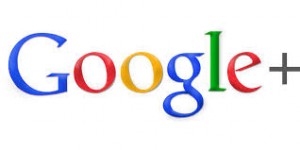The whispers began on April 24th when Google+’s primary caregiver Vic Gundotra announced he would be leaving the company. The “social layer” Google+ started out on rocky turf and has been fighting an uphill battle ever since. Its active users are wholeheartedly engaged, but it lost points early on when all users of Google products (YouTube, Gmail, Drive, etc.) were required to create accounts. Today, the internet realm is wondering: Does Gundotra’s resignation spell Google+’s demise?
The Rumors
It was TechCrunch that first released an article that claimed “Google+ Is Walking Dead.” “What we’re hearing from multiple sources is that Google+ will no longer be considered a product, but a platform — essentially ending its competition with other social networks like Facebook and Twitter,” write Alexia Tsotsis and Matthew Panzarino. In other words, Google+ is being stripped of its current role. In addition to Gundotra’s resignation, their analysis is supported by reports of former Google+ employees being switched to Android projects. Mark Traphagen for MarketingLand also notes that Google has been testing a sign-in button without the +, leaving it as “Sign in with Google”.
Google, of course, denies TechCrunch’s claims. “Today’s news [of Gundotra’s resignation] has no impact on our Google+ strategy,” says a representative, “We have an incredibly talented team that will continue to build great user experiences across Google+, Hangouts, and Photos.”
What’s Really Happening
Many have noted that Google+ can’t just be removed the way past products have been. It’s not an add-on; it’s now the foundation of the Google network. In that aspect, it has performed magnificently. Google needed a way to unify the logins of its many products, as well as their privacy policies. Google+ was the perfect excuse to do just that.
But contrary to TechCrunch’s claims, Google+ isn’t going to fade away into a mere platform.
When the network first launched, its main differentiator was it’s ‘Circles’ feature, which allowed for easy segmentation. You could post about your new puppy for the world to see, but party pictures from the weekend could be restricted to your college buddies, and grandma could only see updates about your new job. Beyond Circles, however, it could do only what Facebook could, and that wasn’t a strong enough incentive for users to switch over.
Now, that has all changed. Google+ has finally zeroed in on what it does best. For example, users are beginning to notice how well Google+ manages photos. The social layer has focused on its photos since day one with its built-in editing software, Picasa compatibility, and the multi-function Auto Awesome. Google+ has also recently a new feature called ‘Stories.’ The app evaluates timestamps, geolocation, and landmarks in an image to deduce whether they were taken during travel. The pictures are then compiled and published automatically as a ‘Story’ once you’ve been back home for 24 hours, which can later be edited manually.
Google has one big thing that Facebook doesn’t: Data. And they know how to use it.
Google+ is also in prime position to draw brands seeking better social media engagement. “Recently we studied more than 3 million user interactions with more than 2,500 brand posts on seven social networks,” says Nate Elliott of Forrester Research, “The result? Brands’ Google Plus posts generated nearly as much engagement per follower as their Facebook posts — and almost twice as much engagement per follower as their Twitter posts.”
This shouldn’t be surprising, given Facebook’s unfortunate move toward less brand visibility. Google+ is going to become a greater source of information for the back end- web developers, marketers, and web community managers.
Don’t pull out the white shroud yet. Google+ is still developing, but rest assured it’s alive and kicking.





